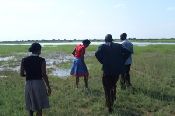|
Prescribed fire: use of fire to attain a pre-established goal
Author: Escola Superior Agrária de Coimbra (in collaboration with Universidade do Aveiro and University of Swansea)
|
Description
Prescribed fire is a tool to manage forest fuel through fire. The fire type depends on the local goal.
Security
To create forest fire, an implementation plan is needed, as well as the presence of a technician with specific training and support teams (fire-fighters, forest fire-fighters, ...). These teams work with water and manual tools and are in charge of the prescribed fire.
|
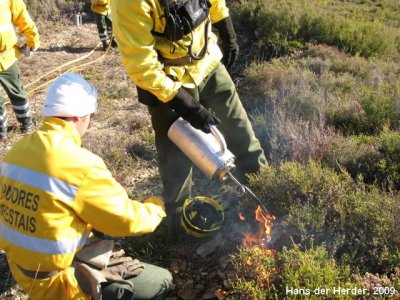 |
| Forest fire-fighters testing the equipment before the prescribed fire. © Hans de Herder, 2009 |
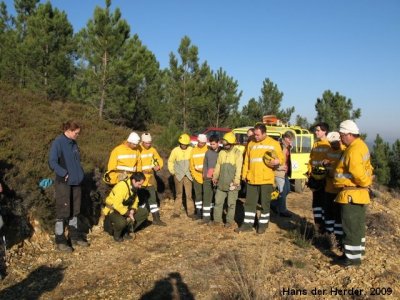 |
First of all, the meteorological conditions (temperature, wind and humidity) should be analysed in order to see if they comply with the prescribed fire’s goal. On the fire day, the safety conditions are thoroughly checked and tasks are distributed among the team members. The fire ignition should follow two main guidelines: counter-fire and counter-slope. By doing so, the teams are aligned and the burning lines that define the area to be burned are initiated. These lines may be spaced up to 10 m apart, and are ignited sequentially. The size of the team depends on the difficulty of the area to be treated with fire. The prescribed fire programme is implemented during the winter season, when weather conditions are favourable and the fuel load is dry or with low humidity. |
| Fire chief briefing the team before the fire. © Hans de Herder, 2009 |
Objectives
- Pasture improvement
- Reduction of the fuel load
- Limitation of forest fire progression.
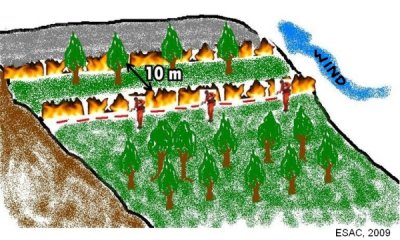 |
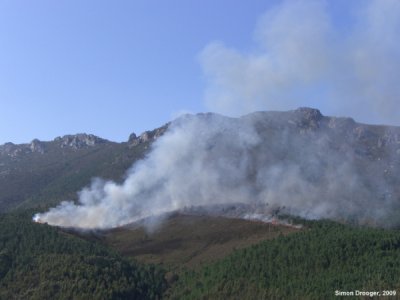 |
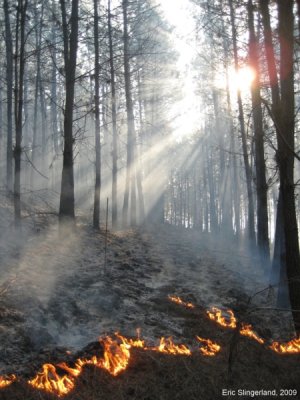 |
| Prescribed fire diagram illustrating the prescribed fire procedure. © ESAC 2009 |
Valtorto (Góis, Portugal) catchment while burning a fire line downslope.
© Simon Drooger, 2009 |
Fire progression during a fire. © Erik Slingerland, 2009 |
Natural/human environment
In the Mediterranean climate, fire is a natural landscape regeneration element. Its controlled introduction aims to minimize the impacts that large wildfires can produce. The adoption of prescribed fire techniques is well accepted by the population that sees this procedure as a way to enhance their earnings.
| Comments |
Conclusion |
| The use of prescribed fire technique in Valtorto was adapted to the study goals. |
The implementation was a success and the expectations on the impacts of erosion are considerable. |
- An experimental fire was carried out. In contrast to what is done in a prescribed fire, the whole catchment was burned and its flame intensity was higher.
|
- The collaboration of the different stakeholders was essential for the experiment because they are very interested in the final result. In comparison with wildfires, a reduction is expected on soil erosion and, even an improvement in its physical and chemical properties.
|
Ongoing work
After applying the technique in the study area, several parameters have been monitored, such as soil infiltration capacity, vegetation development etc.
- This monitoring task has been undertaken in straight collaboration with the development of the work of a PhD student from Wageningen University, Cathelijne Stoof.
|

